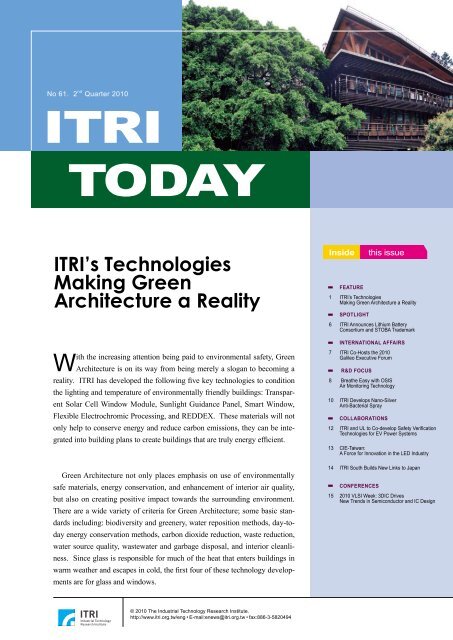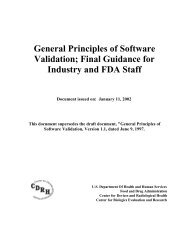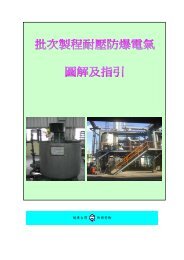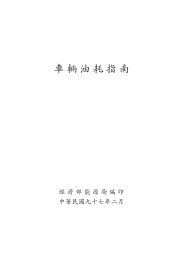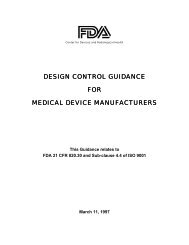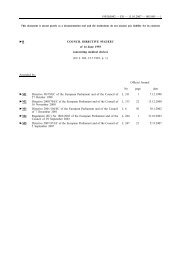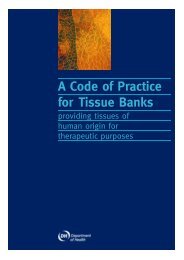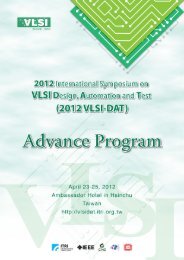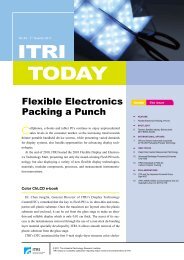ITRI TODAY
ITRI TODAY
ITRI TODAY
Create successful ePaper yourself
Turn your PDF publications into a flip-book with our unique Google optimized e-Paper software.
No 61. 2 nd Quarter 2010<strong>ITRI</strong><strong>TODAY</strong><strong>ITRI</strong>’s TechnologiesMaking GreenArchitecture a RealityWith the increasing attention being paid to environmental safety, GreenArchitecture is on its way from being merely a slogan to becoming areality. <strong>ITRI</strong> has developed the following five key technologies to conditionthe lighting and temperature of environmentally friendly buildings: TransparentSolar Cell Window Module, Sunlight Guidance Panel, Smart Window,Flexible Electrochromic Processing, and REDDEX. These materials will notonly help to conserve energy and reduce carbon emissions, they can be integratedinto building plans to create buildings that are truly energy efficient.InsideFEATURE1 <strong>ITRI</strong>’s TechnologiesMaking Green Architecture a RealitySPOTLIGHT6 <strong>ITRI</strong> Announces Lithium BatteryConsortium and STOBA TrademarkINTERNATIONAL AFFAIRS7 <strong>ITRI</strong> Co-Hosts the 2010Galileo Executive ForumR&D FOCUSthis issue8 Breathe Easy with OSISAir Monitoring Technology10 <strong>ITRI</strong> Develops Nano-SilverAnti-Bacterial SprayCOLLABORATIONS12 <strong>ITRI</strong> and UL to Co-develop Safety VerificationTechnologies for EV Power Systems13 CIE-Taiwan:A Force for Innovation in the LED IndustryGreen Architecture not only places emphasis on use of environmentallysafe materials, energy conservation, and enhancement of interior air quality,but also on creating positive impact towards the surrounding environment.There are a wide variety of criteria for Green Architecture; some basic standardsincluding: biodiversity and greenery, water reposition methods, day-todayenergy conservation methods, carbon dioxide reduction, waste reduction,water source quality, wastewater and garbage disposal, and interior cleanliness.Since glass is responsible for much of the heat that enters buildings inwarm weather and escapes in cold, the first four of these technology developmentsare for glass and windows.14 <strong>ITRI</strong> South Builds New Links to JapanCONFERENCES15<strong>ITRI</strong> <strong>TODAY</strong>2010 VLSI Week: 3DIC DrivesNew Trends in Semiconductor and IC Design▂Summer 2010 Quarterly▂1© 2010 The Industrial Technology Research Institute.http://www.itri.org.tw/eng ● E-mail:enews@itri.org.tw ● fax:886-3-5820494
FEATURE<strong>ITRI</strong> <strong>TODAY</strong>▂Summer 2010 Quarterly▂2Technology1The Transparent Solar CellWindow ModuleSource: <strong>ITRI</strong>The Transparent Solar Cell Window Module usesnanomaterials to transform windows into mechanismswhich can process solar energy. Structurally, a diffuser-made nanomaterial is first placed between two panes ofglass, and after permanent fixture, the sunlight guidancepanel within the diffuser will let sunlight refract towardsthe other windows of the house. The other windows willhave solar energy chip modules embedded within theirframes, so that solar power will be instantly generatedonce solar refraction is in progress.Normally, diffusers are added within PMMA or PC,and the optical path can only provide limited transmissionfor 10cm, with the result that the sunlight on the center ofthe window pane is not transmitted outwards towards theframes for utilization. Dr. Gan Lin Hwang, a researcherin <strong>ITRI</strong> South's Nano Powder & Thin Film TechnologyCenter explains that <strong>ITRI</strong>’s patented technology is uniquein that it uses the compound structure which can conductand diffuse light to converge the sunlight to the solar batterieson the window frames. Use of the wider windowpane area to collect sunlight to be transferred to the narrowerwindow frame structure allows the batteries on theframes to collect 10 to 20 times the amount of energy, andsimultaneously maintains non-obstructed window viewing,while producing high-efficiency power generation.Mr. Ruei Tang Chen, a researcher in <strong>ITRI</strong> South's NanoPower & Thin Film Technology Center, states that a solarenergy window that is one square meter wide can provideenough energy to recharge at least two cell phones, anda twenty-floor glass-fiber building would in turn produce130.5 thousand watts of energy, providing enough powerfor 3,375 desktop PCs.Because future design trends for electronic productsare to make them function at the lowest power level possible,both LED and buildings are ideally suited to adaptthe Transparent Solar Cell Window Module. Moreover,the module provides shielding from heat and exposure, aswell as wind, and even bullets. The Transparent Solar CellWindow Module only needs to be attached to the originalstructure, and any device with a USB can be plugged tothe window frame to start recharging. Recharging canalso be conducted via solar batteries. Energy conservationand carbon reduction can thus be achieved, using <strong>ITRI</strong>’smodule, which provides tremendous improvement inpower generation and in lowering electricity costs.Technology2Sunlight Guiding PanelSource: <strong>ITRI</strong>Sunlight illuminates in two ways: by direct lighting andscattered lighting. The Sunlight Guiding Panel can redirectthe course of sunlight, creating an evenly illuminatedinterior. Dr. Ta-Hsin Chou, deputy director of AdvancedManufacturing Core Technology Division of <strong>ITRI</strong>’sMechanical and Systems Research Laboratories (MSL),explains that <strong>ITRI</strong>’s Sunlight Guiding Panel is a perfectexample of how micro-structure is utilized to refract andcomprehensively reflect sunlight from all elevation anglesas much as possible towards the interior ceiling. This reducesthe need for electric lighting during daytime, andalso lowers discomfort caused by glare, contributing tocreating visually relaxing interior spaces.To achieve the above mentioned effects, <strong>ITRI</strong> usesglass-like material which has the benefit of being durable,as well as weather and ultra-violet resistant. Because UVrays with wavelengths of 313 nanometers are highly destructiveto glass or any high-molecular matter, and cancause cracking and yellowing, new breakthroughs in theuse of material were required.Because the Sunlight Guidance Panel will be locatedoutdoors, it must possess the toughest weather-resistant
<strong>ITRI</strong> <strong>TODAY</strong>▂Photograph by YU-KAI HSUSummer 2010 Quarterly▂3
ing functions.Flexible Electrochromic Processing, developed by<strong>ITRI</strong> South, uses ITO/PET as its base conductive material,and plates it with a coating of electrochromic material atlower costs. This new technology can be mass producedby roll to roll, so that the overall cost is much lower thanthat of using liquid crystals. At the current scale norm of60cm x 30cm, only ±3.5v is required to serve as a drivervoltage for the glass to start changing hues between transparentand blue. It will also effectively block out 80% to95% of infrared rays and heat radiation, meaning that only5% to 20% of infrared rays pass through. Experimentshave shown that <strong>ITRI</strong>’s electrochromic material can successfullylower interior heat by 3 degrees.Moreover, <strong>ITRI</strong> has also developed a nano-structuredelectrode layer. When packaged in gel electrolyte, it employselectricity to cause window glass to switch colors at200ms. The development team has already successfullysolved the two major problems in electrochromic processing:full HD and swift switching technology. Electrochromicprocessing for large scale panes is currently done bysmall scale piecing. This method simultaneously coversthe problems of slower color change, and uneven coloringfor large scale panes, not to mention that it is alsoeasier and quicker to assemble. If <strong>ITRI</strong>’s ElectrochromicProcessing technology is successfully produced and marketed,it may even be commonly available at DIY warehouses,granting consumers a wider selection in domesticmakeovers.Technology5REDDEXSource: <strong>ITRI</strong>Fire-proof building material is a must for ensuringsafety in public buildings or structures. Yet, not everytype or fire-proof material has qualities such as beingnon-hazardous during high temperature, non-toxic to theenvironment when released into underground sewers, andcontributing to the overall stability of the architecturalstructure.Director Jer-Young Chen of MCL's Chemical ApplicationsDivision explains that there are three basic typesof traditional fireproof material, namely the most commonlyseen halogen or bromide, and inorganic material.Although it is true that these materials will not ignite easily,halogen and bromide produce acid gas when burned,and the stiffness of inorganic material can jeopardize fireextinguishingand escape opportunities. Another materialcommonly used within steel structures is vermiculite—itsadvantage is that it is cheap, and it obstructs fire fromspreading, by expanding when coming into contact withfire. Yet because it needs to be mixed together with cementin order to function, its quality in cleanliness andprecision is not up to standard, and it is not easily appliedwithin high-technology architecture.To develop a breakthrough in fire-proof material,<strong>ITRI</strong>’s MCL has been involved in research concerninginorganic fire-proof materials for the past decade, and theoutcome of this research is REDDEX, originally namedK60. K stands for 1,000 degrees Celsius, and 60 indicatesthat the material can remain fire-proof for 60 minuteswithout releasing toxic gas. Steel structures begin to meltat 500 degrees. Existing fire-proof calcium silicate boardscan withstand up to 1,200 degrees of heat, but they willalso heat up to 600 degrees within 100 seconds. RED-DEX on the other hand can withstand the same temperature,yet remain at a mere 300 degrees, which is of coursefar superior for fire insulation.Moreover, REDDEX is highly adhesive, and can alsoserve as coating material, film, or boards. Because RED-DEX is both flexible and thin, it can be applied towardsfire proofing in a variety of fields, such as interior design,furniture, steel structuring, or foam material. REDDEX’suse is not limited to architecture; it can even be appliedin advanced machines such as airplanes and ships, whichrequire higher-than-normal safety standards. This nextgenerationfire-proof material can also elevate internationalfire-safety standards for buildings and vehicles,providing enhanced protection against fire hazards. Withproper promotional efforts, REDDEX has very high marketpotential.<strong>ITRI</strong> <strong>TODAY</strong>▂Summer 2010 Quarterly▂5
SPOTLIGHT<strong>ITRI</strong> AnnouncesLithium BatteryConsortiumand STOBA Trademark<strong>ITRI</strong> <strong>TODAY</strong>▂Summer 2010 Quarterly▂6Lithium-ion batteriesfor electricvehicles are an areaof emphasis among<strong>ITRI</strong>’s many green energyR&D projects. InApril, <strong>ITRI</strong> announcedthe establishment ofHigh Safety LithiumBattery STOBA Consortium,and alsounveiled the STOBAlogo. The Consortiumwas organized by <strong>ITRI</strong>to build a strong position for Taiwan’s batteryindustry in the emerging electric vehiclemarket, in the hope that Taiwan willbecome one of the top three lithium batteryproducers in the world. So far, abouttwenty companies have joined the STOBAConsortium.STOBA (Self-Terminated Oligomerwith Branched Architecture) is a new polymerdeveloped by <strong>ITRI</strong> that effectivelyprevents lithium batteries from explodingwhen damaged, as has occurred in severalhigh-profile cases in recent years. Afterreceiving an R&D 100 Award in 2009,<strong>ITRI</strong>’s STOBA technology became a focusof attention for a number of world-classbattery manufacturers including materialmanufacturer A123 System and batterymaker Panasonic. Meanwhile, ChairmanThe Consortium wasfounded with the objectiveof driving the forwarddeployment of Taiwan'sbattery industry in theemerging electric vehiclemarket.Source: <strong>ITRI</strong>Chen-yuan Gu of Taiwanbattery industryleader Molicel statedthat the long termcooperation betweenMolicel and <strong>ITRI</strong> hasled to the technologytransfer of STOBA,and mass productionof high safety lithiumSTOBA vehicle batteriesis slated to beginin the 4th quarter of2010.<strong>ITRI</strong>’s R&D team will continue workingto develop even safer lithium battery technology,assist companies to establish STO-BA material and lithium battery manufacturingcapabilities, gradually set up safetystandard operating procedures and testingtechnology, unify electric vehicle productsafety procedures, enhance Taiwan batteryindustry differentiation and strengthen internationalcompetitiveness.The new high safety lithium batterySTOBA trademark emphasizes safety andreliability as well as strength and durability.Certification to use the trademark willbe granted once companies pass the testingstandard. In the future, <strong>ITRI</strong> will graduallypromote an international standard for highsafety lithium batteries.
[ INTERNATIONAL AFFAIRS ]<strong>ITRI</strong> Co-Hoststhe 2010 GalileoExecutive Forum<strong>ITRI</strong> and EU together announce the infinite business opportunities that Galileo system will bring.(From left:Michel Bosco, Wen-Hsin Chan, Guy Ledoux, C.K. Lee, and Thorsten Rudolph)To promote interaction betweenTaiwan and EU (EuropeanUnion) Satellite Navigation industries,<strong>ITRI</strong> cooperated with EU tohost the 2010 Galileo Executive Forum.The Forum invited ChunghwaTelecom, Quanta Computer, EuropeanCommission, Septentrio, andthe leading Geographic InformationSystems (GIS) data company in theworld, Navteq, to share the progressand development of the Global GalileoSatellite system and the prospectivebusiness opportunities forTaiwan’s upper, middle, and lowerchains and EC Satellite Industries.Mr. Wen-Chih Chan, Consultantof Department of Industrial Technology,Ministry of Economic Affairs(MOEA), stated that in 2009the Global GPS output surpassed1 billion NTD and Taiwan’s GPShardware output reached over 40million units, making for about18.6% of the world’s market share.In the past five years, Taiwan hasbeen the world leader in satellitenavigation hardware equipment output.Mr. Chan encourages Taiwanmanufacturers to put emphasis indeveloping niche products such asPersonal Navigation Devices.Dr. Chih-Kung Lee, ExecutiveVice President of <strong>ITRI</strong>, pointed outthat in the past Taiwan’s satellitenavigation industries mainly fo-Photograph by HUNG-MOU TSAIcused on the GPS system of the US.Taiwan manufacturers should utilizetheir strong R&D background andproductivity to become more involvedwith EU’s Galileo program.To this end, after participating in theGlobal Galileo Industry Alliancein 2009, <strong>ITRI</strong> has been activelypromoting the visibility of Taiwansuppliers in Europe, and, with theassistance of its overseas office,screening and matching EU enterpriseswith Taiwan satellite industryfirms for Galileo-related businesscooperation.The Galileo system is currentlyin its testing phase, and is expectedto be operational by 2013.<strong>ITRI</strong> <strong>TODAY</strong>▂Summer 2010 Quarterly▂7
that pass through the infrared lightcreate different absorption reactionsand oscillation frequenciesthat form unique changes in thelight spectrum which can be used toidentify the pollutant type and concentration.When combined with awind indicator, the source of the airpollution can also be determined.Compared to the active FTIRmethod that emits infrared light, thepassive FTIR method does not needa reflector. The infrared light that isalready present in the environmentis used to monitor the air, whichimproves operational flexibility.Current applications include remotemonitoring of volcanic gases, studyof the atmospheres on distant planets,and analysis of unknown wasteand ground pollution during excavationwork. Passive FTIR is moreeasily affected by environmentalfactors and more sensitive to temperaturedifferences.The special feature of this technologyis that it can cover a widetesting area and perform remotesensing at a safe distance from thesource of the pollution. Since theanalytical instrument is combinedtogether with the main unit, resultscan be obtained in less than 10minutes after the sample is takenfor analysis. Continuous monitoringcan be done to prevent possibleerrors from single point or singletime sampling. The unit can measureover 8000 types of organic andinorganic pollutants to the accuracyof less than one part per million.In order to broaden the use ofOSIS, GEL also announced thedevelopment of a stepwise sourcesearching method to identify unknownpollution sources. First,the odor components and sourcedirection at the petitioned area areanalyzed to incrementally definethe polluted region and reduce thepollution. Then the informationregarding the pollution sources iscompared to process attributes andpollutants from nearby factories toidentify the real offender.Reducing Costs for Businessesand SocietyMany private enterprises suchas semiconductor foundries andoptoelectric and display panelplants have hired <strong>ITRI</strong> to assistwith the testing for internal andexternal escape of gaseous pollutants.One application designed forindoor spaces utilizes the exhaustair analysis method. For example,by placing the exhaust air cylinderin the work area, it can be determinedif there are any harmfulsubstances in the indoor air. Anotherapplication is the monitoringof production processes for gas orother leaks. Although to the outsideworld, escaped gas is considered asa pollutant, to a factory, it may bea resource and its loss may carrya financial cost. Such costs can bereduced or avoided through the useof <strong>ITRI</strong>’s new system. By improvingenvironmental monitoring, themanpower expenditures and socialcosts resulting from environmentalprotests can also be reduced. OSISwill therefore aid industrial developmentwhile protecting quality oflife and human rights.<strong>ITRI</strong>’s StepwiseSource-searchingMethod:1st: Define the odor componentsand source directionat the petitionedarea.2nd: Define the pollutedregion and reduce thesurvey area.3rd: Draw out the pollutantsfrom the nearby factoriesto identify the real offender.<strong>ITRI</strong> <strong>TODAY</strong>▂Summer 2010 Quarterly▂9
[ R&D FOCUS ]<strong>ITRI</strong> DevelopsNano-SilverAnti-Bacterial Spray<strong>ITRI</strong> <strong>TODAY</strong>▂Summer 2010 Quarterly▂10<strong>ITRI</strong>’s Nano-silver antibacterial sprayercan be used on a variety of materials,including ABS plastic, glass, ceramics,and metals.Photograph by HUNG-MOU TSAIModern nano-technology hasdeveloped to the point whereit can be applied in our everydaylives, and <strong>ITRI</strong> recently unveiledone such application, a nano-silveranti-bacterial sprayer that uses silverions to destroy bacteria cellsand inhibit biochemical activity.This sprayer works on 650 speciesof bacteria, and is not only easy touse but also long lasting.Silver ions are easily affected byparticles in air and this may lead toloss of long-term effectiveness. Thenano-silver anti-bacterial sprayerdeveloped by <strong>ITRI</strong>’s NanotechnologyResearch Center (NTRC),however, makes use of nano-silverthread covered with polymer materials,which makes the product bothlong lasting and stable. It has a 99%antibacterial rate when first applied,and after thirty days still has an antibacterialrate of over 90%.The spray-on application acts asan antibacterial film, a protectivelayer which can be sprayed on doorknobs, table surfaces, and phones.This not only protects equipmentsurfaces but also protects againstbacteria. It is easily applied, andcan be wiped away and reapplied asneeded.Cooked up in the KitchenProject manager Ming-Jyh Changof NTRC explains that nano-silverhas a wide range of characteristics.Besides being anti-bacterial, it alsohas electrical conductivity, thermalconductivity, optical double-absorption,and is anti-static and anti-electromagnetic.In addition, the rodlikenano-silver technology used by<strong>ITRI</strong> differs from the particle formoften used. This technology can createchannels, and be released slowlyrather than being exposed to the air,affecting people in proximity or disseminatingthe anti-bacterial effectinto the surrounding environment.The development of the membraneor antibacterial film createdby the spray drew inspiration fromhouse cleaning product ads on theshopping network. A spray was convenientto not only clean but alsostop the accumulation of grease anddirt, and a spray could be widelyapplied.
Mr. Chang added that the spraycan be used on a variety of materials,including ABS plastic, glass,ceramics, and metals. After 10-15minutes of spray application themembrane will dry and fix, leavingthe user with a month of antibacterialprotection. For example, buttonsin an office building‘s elevatorare touched daily by thousands ofpeople. A few sprays at the end ofthe day create an effective film bythe next day, protecting workers andvisitors alike.Applications AboundNano-silver is currently a hottopic for nano-technology applications.Ming-Jyh Chang also commentedthat the goal of this R&Dproject has always been clearly seton everyday life applications suchas telephones, keyboards, buttons,mobile phones, remote controls andother objects that are touched regularly.Other possible applicationscould include escalators, chairs andother public areas, as well as for vehicles,steering wheels, car stereo,seat belts and so on – basically anywherethat can be sprayed.<strong>ITRI</strong>’s nano-silver anti-bacterialsprayer has already been transferredto a local Taiwanese company, andmass-production is scheduled to beginin late 2010. The business technologytransfer process starts with<strong>ITRI</strong> providing key raw materials,Silver ions areeasily affectedby particles in air andthis may lead toloss of long-termeffectiveness.<strong>ITRI</strong>’s nano-silver anti-bacterial sprayer has been transferred to company and the mass-productionis scheduled to begin in late 2010.Photograph by HUNG-MOU TSAIand delivering formulas to manufacturers.In addition to technology,<strong>ITRI</strong> also assists in establishingmarketing channels.Mr. Chang is optimistic that inthe near future, nanotechnologywill extend its applications to food,clothing, housing, transportation,education, music and other areas,and become more influential to ourdaily life.<strong>ITRI</strong> <strong>TODAY</strong>▂Summer 2010 Quarterly▂11
[ COLLABORATIONS ]<strong>ITRI</strong> <strong>TODAY</strong>▂Summer 2010 Quarterly▂12<strong>ITRI</strong> and ULto Co-developSafety VerificationTechnologies forEV Power SystemsThrough co-work with UL, <strong>ITRI</strong> will establish new and environmentally positive milestonesfor Taiwan’s Green Industry development.Photograph by HUNG-MOU TSAI<strong>ITRI</strong> recently announced the signingof a Letter of Intent with UnderwritersLaboratories (UL), theglobally renowned organization forsafety standards and certification,to co-develop testing technologiesand regulations for electronic vehiclepower systems, and also forlong-term safety verification of thedeterioration of lithium batteriesand solar cells. The cooperationbetween <strong>ITRI</strong> and UL will assistTaiwanese companies in developingtechnologies and products thatcomply with international GreenProduct Standards, and thus gain anadvanced entrance into the market,ahead of other competitors.UL is an internationally recognizedorganization for safetystandard certification and test verification.Gary Savin, vice presidentand general manager of UL's globalpower & controls business, notedthat UL had already announcedstandard regulations for vehiclepower chargers in the US in 1998,focusing mainly on the security ofpower distribution systems for electricvehicles, as well as safe usageof device parts, and they have continuedsince then to develop relatedverification techniques.The joint endeavor for developmentof safety standard verificationtechnology for electronic vehiclepower systems will allow <strong>ITRI</strong> toassist Taiwanese manufacturers toenhance their know-how, and subsequentlyproduce products which areflawless in both functionality andsafety. UL will contribute its wealthof expertise and experience in standarddevelopment, to assist Taiwanin establishing safety standards andverification systems that are alignedwith international requirements. Itis also anticipated that Taiwanesemanufacturers will participate inupcoming events related to the standardizationof safety regulationsconcerning electronic vehicle powersystems.Deputy General Director JamesWang of <strong>ITRI</strong>'s Mechanical & SystemsResearch Laboratories (MSL)stresses that <strong>ITRI</strong> has already establishedits own integration platformfor electronic vehicle technology.While UL is clearly the expert concerninginternational safety regulationstandards for electric vehicles,the new collaboration will allowboth parties to gain advanced insightinto international developmenttrends in this growing sector. Earlierdevelopment of safety designs andverification techniques for electronicvehicle safety will benefit localmanufacturers by helping them toestablish verification systems thatare acknowledged both locally andinternationally, thus enhancing thequality of domestically producedelectronic vehicles, and elevatingTaiwan’s competitive edge in this
market. <strong>ITRI</strong> plans to work with ULin the next five years on technologicaldevelopment, such as power rechargesystems, mobile battery sets,and power systems for electronicvehicles.Since 2005, <strong>ITRI</strong>’s Material &Chemical Research Laboratories(MCL) has been working with ULon modifying standard regulationsfor lithium batteries, to ensurestandard conformity in quality andreliability of battery design andmanufacturing. In addition, <strong>ITRI</strong>’sCenter for Measurement Standards(CMS) has plans to work furtherwith UL on developing solar cellmodule safety verification techniquesas well as safety regulationsfor module material. These developmentswill help both <strong>ITRI</strong> andUL to gain a firm hold on futuretrends of safety standards for solarmodules.Moreover, UL has also announcedits establishment of a“Technology Research Center forSafety Verification of AdvancedEnergy Sources” in Taiwan. Thisshows that UL’s determination to investin safety research for advancedtechnology is not only focused onverification technology for electronicvehicles, but will also includeother energy sources such as solarand wind-generated power. <strong>ITRI</strong>will continue its efforts on developingvarious sources of green energy,and will also actively participate inthe establishment of related internationalregulations.[ COLLABORATIONS ]CIE-Taiwan:A Force forInnovation in theLED IndustryCIE-Taiwan will make efforts to move the industry from the position of followers to that ofstandard setters.(Third left:Dr. Hengstberger, the chairman of the CIE; forth left:Dr. Hsin-Sen Chu, CIE-Taiwan’s first president and <strong>ITRI</strong>’s vice president.) Photograph by HUNG-MOU TSAICIE-Taiwan was establishedto promote the developmentof Taiwan’s Lighting Industry andhelp expand its global market presence.CIE-Taiwan will endeavor toencourage and reinforce industry,government, and academic interactionand create a platform for cooperation.At the same time, CIE-Taiwan will actively participate ininternational optics, lighting technologyand product standardizationactivities. Through CIE-Taiwan’sefforts, domestic industry will havea common voice and direction, toassist local lighting companies asthey upgrade from the position offollowers to that of standard setters.CIE (la Commission Internationalede l´Eclairage) is an internationalscientific authority on optics, lighting,and color, which is primarily involvedin the formulation of international industrystandards and scaling. BecauseTaiwan has long occupied a prominentposition in the lighting industry,from early development of lampproducts to more recent innovationsin semiconductor lighting, it makessense for Taiwan to be involvedwith the formulation of internationalstandards. Taiwan’s acceptanceas a CIE member can be seen as amilestone in the development of thedomestic lighting industry.<strong>ITRI</strong> <strong>TODAY</strong>▂Summer 2010 Quarterly▂13
Dr. Hsin-Sen Chu, CIE-Taiwan’sfirst president and an executive vicepresident of <strong>ITRI</strong>, will become thecontact point for international cooperation,available to counsel industrymembers and work towardsconsensus in the optics and lightingindustry, as well as to represent theindustry at international events. Thiswork will also lead to inter-industryalliances and increased mobility onthe economic world stage for Taiwan.International standardizationfrom a multidisciplinary perspectivenot only brings influence, leadershipand access to the global marketbut also an excellent business opportunityfor Taiwan.[ COLLABORATIONS ]<strong>ITRI</strong> <strong>TODAY</strong>▂Summer 2010 Quarterly▂14<strong>ITRI</strong> South BuildsNew Links to Japan<strong>ITRI</strong> and Taiyo Yuden have established a closely cooperative partnership since 1996.Japan is a country known for itswell integrated industrial andacademic spheres. In order to bringthis know-how and innovation to<strong>ITRI</strong> South, Dr. Shing-Yuan Tsai,Executive Director of <strong>ITRI</strong> South,visited Japanese firms such as VAM(Victor Advanced Media), TaiyoYuden, and Canon, strengtheningties with Japan and laying the foundationfor a new wave of East Asiancooperation.Source: South/<strong>ITRI</strong>Dr. Tsai mentioned that for <strong>ITRI</strong>South, 2010 is the first ‘internationalbusiness’ year, which it will use topush forward local R&D initiatives.One such initiative is the signing ofa 15 years cooperation MOU withTaiyo Yuden Co. Established in1950, Taiyo Yuden is primarily aproducer of ceramic capacitors andhigh-density electronic components.The company's research missionis built on a foundation of leadingtechnology, broad product use, andeco-friendly production processes.With the successful development ofCD-R and DVD burning products,it has become a world renownedname and an important supplier forSony, Fuji Film, TDK and Maxell.The cooperation between <strong>ITRI</strong>and VAM dates back to 1996, whenthen-Director of R&D Mr. Masami(current chairman of VAM), andDr. Tsai, then General Director of<strong>ITRI</strong>’s Mechanical and SystemsResearch Labs, established a similarcooperative partnership. Thispartnership included the implementationof Japanese equipment andtechnology as well as the sharing ofOCM systems, leading to a win-winrelationship for many years. Dr. Tsaibelieves Mr. Masami has a uniqueleadership style and an almost unlimitedcapacity to innovate.Taiyo Yuden Co. merged withJVC to create VAM in 2008, bringingtogether the audio-visual componentwith optical media departments.Their products are sold inevery major electronics store. VAMand <strong>ITRI</strong> South’s MOU is not onlya step towards internationalization,but also a wave which will fertilizethe industry with innovation.
[ CONFERENCES ]2010 VLSI Week:3DIC Drives New Trendsin Semiconductorand IC DesignThe 2010 International Symposium on VLSI Design,Automation & Testing (VLSI-DAT) wasorganized by <strong>ITRI</strong> to share the newest trends andtrailblazing research in IC design and semiconductorswith world renowned international companiessuch as Freescale, Infineon, STMicroelectronics,and Intel. Responsible for the organization ofthe symposium, Dr. Yi-Jen Chan, Vice Presidentand General Director of <strong>ITRI</strong>’s Electronics &Optoelectronics Research Labs (EOL), said thatbecause 3DIC will be the trend that powers thesemiconductor industry for the next ten years, thisyear’s VLSI week symposium focused on 3DICchip design, TSV production technology and testing. Other topics coveredincluded RF radio frequency components, memory, graphics computing CPU,micro-electromechanical (MEMS) integration, and medical electronics.With support from the MOEA’s Technology Project Plan, 3DIC has beenactively promoted and a three-dimensional integrated circuits laboratory wasestablished to create an international platform, using integrated EDA, ICdesign, manufacturing, packaging and design oriented 3D IC concepts. Thisvalue-added system strengthens the global competitiveness of Taiwan’s semiconductorindustry.In addition to the topic of 3D IC, the symposium also explored the rise ofpersonal care electronics, sharing developments in bio-sensing RF technologyused in human disease prognosis. Dr. Cheng-Wen Wu, Vice Presidentand General Director of <strong>ITRI</strong>'s Information & Communication Research Labs(ICL), spoke of the new applications of IC chips outside of computers andtelecommunications, primarily in areas such as medical electronics.During the opening ceremony, the Pan Wen Yuan Foundation which hasstrong ties with the semiconductor industry in Taiwan, presented specialERSO Awards to Hsing Chien Tuan, CEO of Chimei Innolux; Nicky Lu,Chairman & CEO of Etron Technology; and Tzu-Fei Shiao, Executive VicePresident of Eternal Chemical, in order to recognize their outstanding contributionsto the industry.2010 ERSO Award recipients: H. C. Tuan (left),Nicky Lu (second right),and Tzu-Fei Shiao (right).Source: <strong>ITRI</strong>Based on the 3D ICvalue-added system,it will strengthenthe global competivenessof Taiwan’s semiconductorindustry.<strong>ITRI</strong> <strong>TODAY</strong>▂Summer 2010 Quarterly▂15
Publisher: Jyuo-Min ShyuThe Industrial Technology Research Instituteis a not-for-profit R&D organization engagingin applied research and industrial service.Founded in 1973, <strong>ITRI</strong> has guided Taiwan’sevolution from a low-tech manufacturer toa high-tech powerhouse and now into theknowledge economy era, adding value forexisting industries while building new onesfrom the ground up. With almost 6,000 researchand management staff, each year <strong>ITRI</strong>is granted about 1,000 patents and transfershundreds of technologies to industry tospread economic benefits to society. In additionto its Hsinchu headquarters, <strong>ITRI</strong> recentlyopened a branch campus in southern Taiwanand has international offices in Silicon Valley,Tokyo, Berlin, and Moscow.<strong>ITRI</strong> Today is a quarterly publication reportingmajor events and achievements at <strong>ITRI</strong>.Editor in Chief: Betsy FanManaging Editor: Jeanne YehContributing Editor: Dan KingArt Designer: Karen HsuPrinted by: Yuen Foong Paper Co., LTD.Subscription Inquiries:E-mail:enews@itri.org.twFax: +886-3-582-0494Finding Past Issues: http://www.itri.org.tw/eng/publication/index.aspPublished by:Industrial Technology Research InstituteRm. 115, Bldg. 51, No. 195, Sec.4, Chung Hsing Rd.Chutung, Hsinchu, Taiwan 310, R.O.C.Tel: +886-3-582-0100Fax: +886-3-582-0045Web site: http://www.itri.org.tw/eng© 2010 All rights reserved.<strong>ITRI</strong>’s International Offices<strong>ITRI</strong> International Inc.2880 Zanker Rd., Suite 109,San Jose, CA 95134, U.S.A.Tel: +1-408-4289988Fax: +1-408-4289388Website: http://www.itri.comE-mail: seanwang@itri.com<strong>ITRI</strong> Tokyo OfficeTTD Bldg. 3F,1-2-18 Mita,Minato-Ku, Tokyo 108-0073,JapanTel: +81-3-5419-3836Fax: +81-3-3455-5079Website: http://w3.itri.org.tw/japan/E-mail: info@itri-tokyo.jp<strong>ITRI</strong> Western Europe OfficeHohenzollerndamm 187, 7OG., D-10713 Berlin, GermanyTel: +49-30-860936-0Fax: +49-30-86420677Website: http://www.itri.deE-mail: contact@itri.de<strong>ITRI</strong> Moscow OfficeOffice 303, Build. 15, 1-stBrestskaya Street, 125047,Moscow, RussiaTel: +7-499-978-6125Fax: +7-499-978-9383Website: http://www.itri.deE-mail: LHsieh@itri.de


